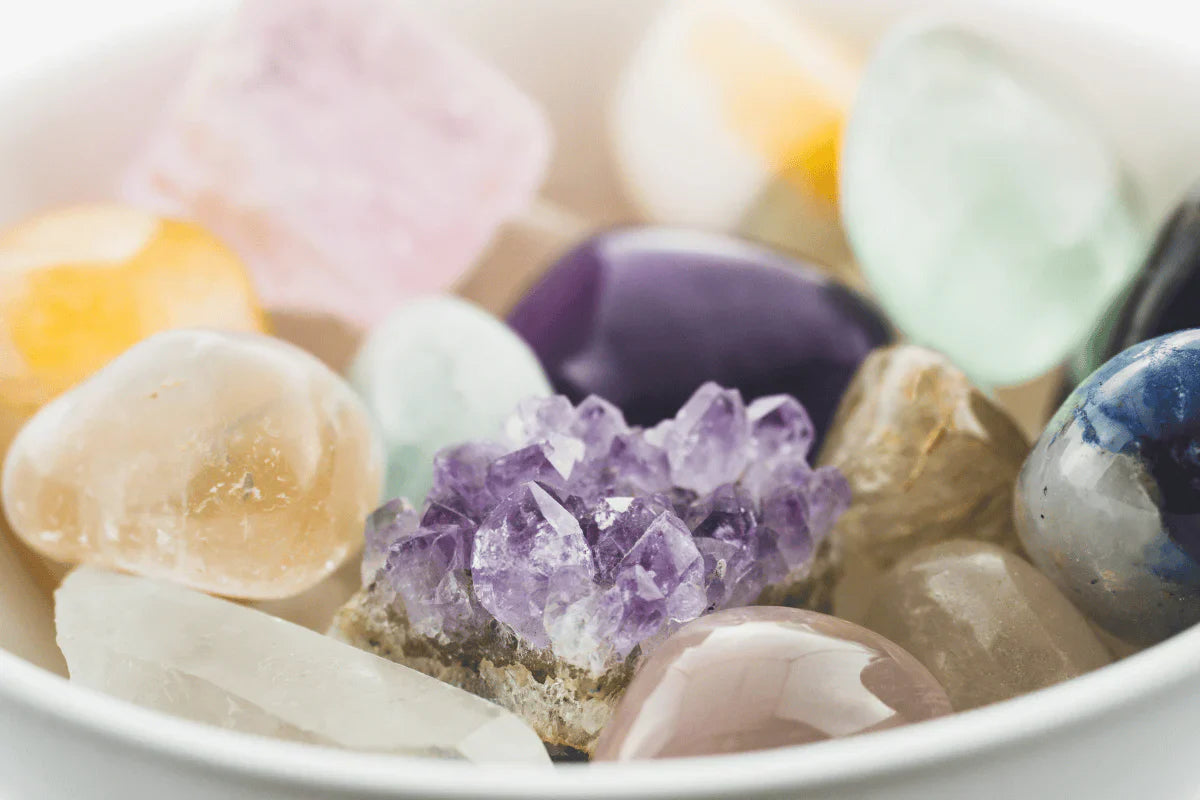
The legacy
In the world of jewelry and lithotherapy, vocabulary matters. For a long time, the term "semi-precious stones" was used to describe all gems that weren't diamonds, rubies, sapphires, or emeralds. However, this term eventually became problematic because it implied that these stones were less valuable.
Today, the official term is “fine stones.” This change, far from trivial, reflects a desire to better recognize the beauty and uniqueness of each gemstone. Why did this transition take place? What impact does it have on the jewelry market and the perception of stones? Let's explore together this evolution that enhances the value of gemstones.
A historical classification between precious and semi-precious stones
For centuries, gems have been classified into two broad categories:
• Precious stones, which only include diamond, ruby, sapphire and emerald.
• Semi-precious stones, which included all other stones, regardless of their rarity or beauty.
This distinction dates back to ancient traditions and is based primarily on economic and cultural criteria. Precious stones were associated with elites and royal crowns, while other stones, although often equally fascinating, were perceived as having lesser value.
A misleading and reductive term
The problem with the term "semiprecious" stems from the prefix "semi," which suggests a lower or incomplete value. However, some so-called semiprecious stones, such as tanzanite, amethyst, or Paraiba tourmaline, are extremely rare and valuable on the market.
Take amethyst, for example: once considered as precious as sapphire or ruby, it lost this status after the discovery of vast deposits in Brazil. Yet its beauty and energetic qualities still make it a prized stone.
Faced with this linguistic injustice, jewelry professionals have gradually sought to modify this terminology.
Why was the term “fine stones” adopted?
A turning point in 2002
In France, an official change took place in 2002 with the publication of Decree No. 2002-65. This decree prohibits the use of the term “semi-precious stones” in a commercial context and imposes the term “fine stones” for all gemstones other than the four precious stones.
This decision was made for several reasons:
1. Remove the unjustified hierarchy between stones and recognize their unique value.
2. Avoid confusion for consumers, who might believe that “semi-precious” stones were of lower quality.
3. Harmonize the terms used in jewelry with a more neutral and rewarding name.
Since then, many countries and industry players have adopted this terminology, although the term “semi-precious” is still sometimes used out of habit.
A term that highlights gems
The choice of the word “fines” is not insignificant. It evokes the delicacy, beauty, and elegance of stones, without comparing them to precious stones.
Gemstones include a wide variety of gems with fascinating colors and properties, such as:
• Rose quartz, soft and soothing
• Citrine, bright and sunny
• Tourmaline, with its many shades
• Peridot, a bright green
• Labradorite, with its mysterious reflections
This new classification allows us to appreciate them for what they are, without placing them in a category “inferior” to precious stones.
What impact did this change have?
Better recognition of fine stones
Thanks to this evolution, fine stones are no longer perceived as "less prestigious" alternatives to precious stones. They are now recognized for their intrinsic beauty and uniqueness.
Today, some gemstones are even more coveted than certain precious stones, due to their rarity and unique properties. Tanzanite, for example, is 1,000 times rarer than diamonds!
A more respectful language in lithotherapy
In the field of wellness and lithotherapy, the shift to the term "fine stones" also has a positive impact. By removing the term "semi-precious stones," we avoid attributing less importance to the energies and benefits of gemstones used in rituals.
Natural stone enthusiasts are therefore more inclined to choose a stone for its virtues and personal resonance, rather than based on a hierarchical classification.
An ethical choice for jewelry designers
As a jewelry designer, I prefer this term because it better reflects the philosophy of my work: each stone is precious in its own way. Whether set in a bracelet, a necklace, or earrings, a gemstone carries its own unique story, energy, and beauty.
An evolution still in progress
Despite these advances, the term "semi-precious stones" is still used in certain contexts. Awareness-raising efforts continue, both among professionals and consumers.
By choosing to adopt the term “fine stones”, we are participating in a process of promoting and recognizing these extraordinary gems.
So, the next time you choose a gemstone jewelry, remember: their value is not measured by an ancient name, but by their brilliance, their energy and the pleasure they bring you.
A deserved recognition
The shift from "semi-precious stones" to "fine stones" is much more than a simple change in vocabulary. It marks a fairer and more respectful recognition of gemstones and their place in jewelry and lithotherapy.
Whether for their beauty, their properties or their symbolic meaning, gemstones deserve to be celebrated for what they are: unique, authentic and precious in their own way.
